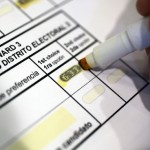
Vote counting is one of the most critical issues after the election activities. Inaccuracies or inconsistencies in the counting method used would lead to a massive controversy, or it could even result to commission of crimes amongst candidates and their devout followers.
In order to improve on the current counting system, MIT Professor in Electrical Engineering and Computer Science, Ron Rivest, helped developed a new system called Scantegrity II.
The system Scantegrity II Scantegrity II, was designed to work with ordinary optical-scan voting technology. The technology was used in the United States since the 2000 presidential election, and usually requires the voter to fill in bubbles printed on a ballot next to candidates’ names.
“With Scantegrity II, the voter instead uses a special pen to expose a code printed inside the bubble in invisible ink. Thereafter, the ballot is fed into an ordinary optical reader, which simply determines which bubbles have been darkened”, says Rivest.
The main objective of this project is to avoid vote tampering. The voter can write down the exposed codes after the voting procedure, later he can confirm his votes to the election commission’s website through a serial number that matches with his codes.
Scantegrity II debuts at the Takoma Park election.
